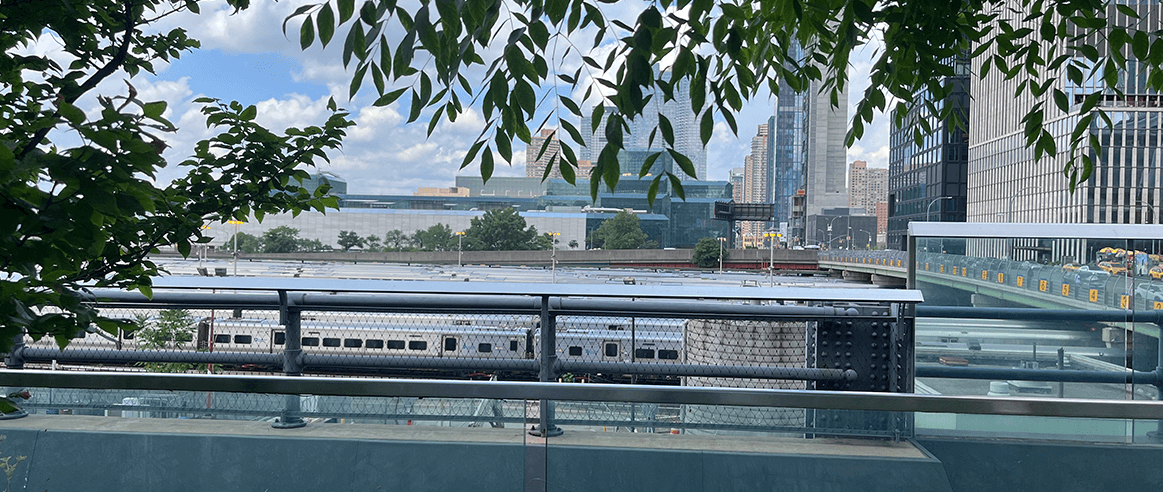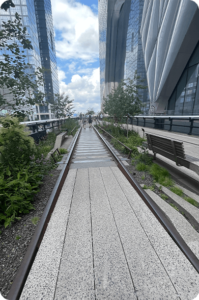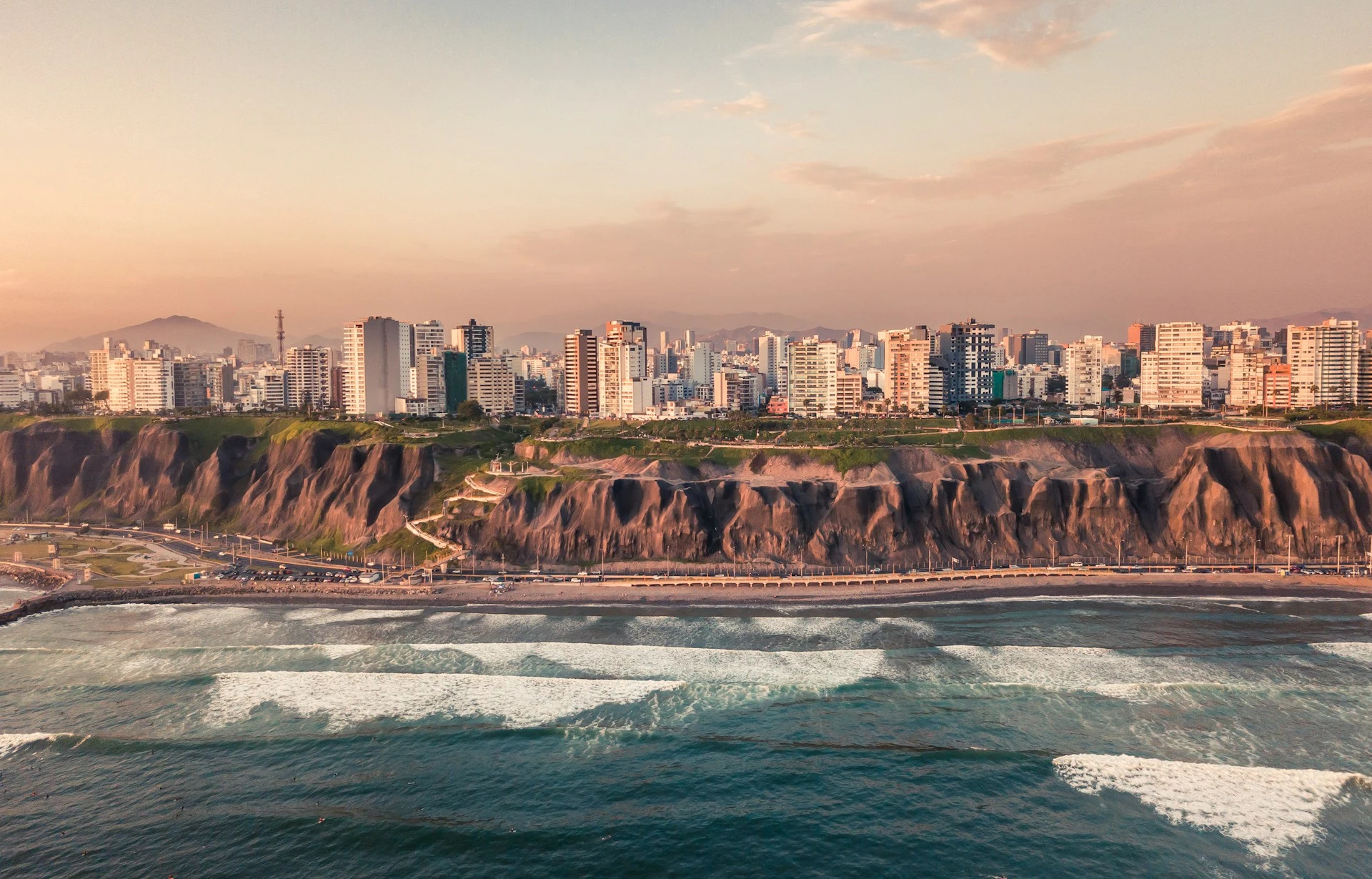Written by Jaden Parker
Since cardio is not my first strength—or even my tenth one—I did not walk the entire length of the High Line. However, I found it to be breathtakingly beautiful and loved the mix of greenery with industrial rail lines. The story of how the High Line came into existence dates back to the year 1910. At this time, trains ran on street-level tracks to deliver food to lower Manhattan. Unfortunately, over 540 people died on 10th Avenue from these delivery trains, giving it the moniker “Death Avenue.”
In the 1920s until 1941, the “West Side Cowboys,” who were just railroad men on horses, waved red flags to warn pedestrians of trains coming down the street. In 1924, the street-level crossings were removed and an elevated rail line was created instead. The first train ran on the High Line in 1933, and the High Line—called the “West Side Elevated Line” back then—was fully operational a year later. Some lines even cut through buildings like the Nabisco factory, which made it a lot easier for companies to receive their food shipments.
In the 70s, the rise in trucking decreased the use of trains, leading the lines from Bank St. to Spring St. to be demolished. The High Line was officially obsolete by 1983. It was Peter Obletz who first called for the structure to be preserved. He was inspired by Congress passing the Trail System Act which let people transform old tracks into recreational areas. During this, the lines were destroyed from Bank Street to Gansevoort.
As his last act as a mayor, Rudy Giuliani signed a demolition order of the High Line amidst the CSX Transportation opening proposals for transformation of the area in 1999. However, a garden of wild plants had begun to grow, resulting in the founding of Friends of the High Line. Started by Joshua David and Robert Hammond, Friends of the High Line are the only non-profit responsible for operation and maintenance of the High Line.
The Friends of the High Line held a competition for ideas of how to repurpose the High Line in 2003, and Zaha Hadid Architects actually had a submission that was viewed by the public! However, they settled on a team of James Corner Field Operations landscape architecture firm, Diller Scofidio + Renfro (remember The Shed?), and planting designer Piet Oudolf. They broke ground in 2006 after receiving full support from the West Chelsea Special District and Mayor Bloomberg. The New York Times headline read “Frog of a Railroad to Become Prince of a Park.”

Fast forward almost two decades later, and the High Line Moynihan Connector has just opened in 2023, connecting the west side of Manhattan and the Train Hall with only one street crossing. Now it is a continuous 1.45-mile-long walkway. Its walking paths have concrete planks with open cracks for wild grass to grow. It expertly blends from concrete to vegetation, and there are metal railways sticking up out of the concrete in various areas.
Because this project is from a non-profit organization, you can donate to Friends of the High Line here!











